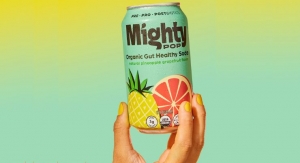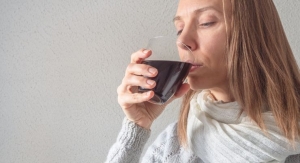07.01.09
Functional beverages may finally have reached a point of saturation, according to the latest figures from Mintel, and I have to admit I'm not that surprised. For the last several years it has been exciting to watch the growth and evolution of the market. But in the back of my mind I always wondered how long this phenomenal trajectory could possibly continue. With every passing year there were new concepts and innovations to talk about, each one better than the next. And then it all seemed to come to a screeching halt.
It was only a matter of time before the impact of the dismal economy trickled down to functional beverages. Fact is, consumers are tightening their wallets and there's no room for some of these novelty items. Instead of reaching for nutritional beverages, consumers are choosing liquid refreshment in the form of good old-fashioned water. On top of that, controversies surrounding caffeine content and questionable ingredients continue to threaten the growth and viability of certain sectors of the market.
But the news isn't all bad. According to Packaged Facts, functional foods and beverages are well positioned to benefit from the mega trends of health and convenience. Further, the market research firm believes that the current recession will only have a minor impact on purchase decisions because consumers are taking a more proactive vs. reactive approach to their health these days and functional beverages fit nicely into that proposition.
During the past couple of years there has been a large focus on the slowly declining sales of carbonated beverages, ushering in major changes for beverage manufacturers not involved in the functional beverage game. But what a lot of people seem to forget is carbonated beverages still hold enormous market share-one out of two consumers is still purchasing a carbonated beverage-and that's not going away anytime soon. What's impressive is that functional beverages wielded enough power to move the sales needle in their direction at the expense of carbonated beverages.
Experts that remain bullish on the outlook for functional beverages continue to emphasize their appeal and versatility. Beverage industry veteran Jim Tonkin, for example, says he is witnessing a frenetic pace of R&D in this sector, and that the economy, so far, has not impacted this activity.
The good news for this stalling segment is functional beverages are here to stay. Just 10 short years ago this relatively nascent category-especially energy beverages-had formulators fumbling to find the right mix of ingredients and marketers worrying about how to sell these concepts to consumers. Back then, the most significant advances revolved around calcium fortification and electrolytes. Today, the category boasts all sorts of innovations, such as probiotic-fortified water and smoothies packed with the antioxidant power of Brazilian berries.
While growth has slowed considerably for functional beverages, what's left is a solid category that hardly existed 20 years ago. But the months and years ahead aren't going to be easy. To relieve the tension, try to find a tasty functional beverage fortified with L-theanine or St. John's Wort-it will help make these troubling times a bit more bearable.
Rebecca Wright
Editor
rwright@rodpub.com
It was only a matter of time before the impact of the dismal economy trickled down to functional beverages. Fact is, consumers are tightening their wallets and there's no room for some of these novelty items. Instead of reaching for nutritional beverages, consumers are choosing liquid refreshment in the form of good old-fashioned water. On top of that, controversies surrounding caffeine content and questionable ingredients continue to threaten the growth and viability of certain sectors of the market.
But the news isn't all bad. According to Packaged Facts, functional foods and beverages are well positioned to benefit from the mega trends of health and convenience. Further, the market research firm believes that the current recession will only have a minor impact on purchase decisions because consumers are taking a more proactive vs. reactive approach to their health these days and functional beverages fit nicely into that proposition.
During the past couple of years there has been a large focus on the slowly declining sales of carbonated beverages, ushering in major changes for beverage manufacturers not involved in the functional beverage game. But what a lot of people seem to forget is carbonated beverages still hold enormous market share-one out of two consumers is still purchasing a carbonated beverage-and that's not going away anytime soon. What's impressive is that functional beverages wielded enough power to move the sales needle in their direction at the expense of carbonated beverages.
Experts that remain bullish on the outlook for functional beverages continue to emphasize their appeal and versatility. Beverage industry veteran Jim Tonkin, for example, says he is witnessing a frenetic pace of R&D in this sector, and that the economy, so far, has not impacted this activity.
The good news for this stalling segment is functional beverages are here to stay. Just 10 short years ago this relatively nascent category-especially energy beverages-had formulators fumbling to find the right mix of ingredients and marketers worrying about how to sell these concepts to consumers. Back then, the most significant advances revolved around calcium fortification and electrolytes. Today, the category boasts all sorts of innovations, such as probiotic-fortified water and smoothies packed with the antioxidant power of Brazilian berries.
While growth has slowed considerably for functional beverages, what's left is a solid category that hardly existed 20 years ago. But the months and years ahead aren't going to be easy. To relieve the tension, try to find a tasty functional beverage fortified with L-theanine or St. John's Wort-it will help make these troubling times a bit more bearable.
Rebecca Wright
Editor
rwright@rodpub.com



























